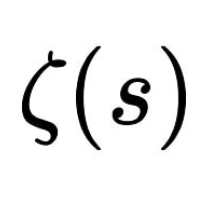Énoncé de l’exercice n°1 :
Déterminer un équivalent de $J_n = \int_0^{+\infty} \frac{\cos(t)}{1 + n^2 t^2} \, \mathrm{d}t$ lorsque $n \to +\infty$.
Indication :
Faire un changement de variable.
Utiliser le théorème de convergence dominée.
Corrigé de l’exercice :
Pour tout $n \geq 1$, on a $\left| \frac{\cos(t)}{1 + n^2 t^2} \, \mathrm{d}t \right| \leq \frac{1}{1 + t^2}$, ainsi l’intégrale $Jn$ converge. Posons le changement de variable $x = nt$, on obtient : $$ \int_0^{+\infty} \frac{\cos(t)}{1 + n^2 t^2} \, \mathrm{d}t = \frac{1}{n} \int_0^{+\infty}\frac{\cos\left( \frac{x}{n} \right)}{1 + x^2} \, \mathrm{d}x = \frac{1}{n} \int_0^{+\infty} f_n(x) \, \mathrm{d}x $$ avec $f_n(x) = \frac{\cos\left( \frac{x}{n} \right)}{1 + x^2}$. Définissons $f : x \mapsto \frac{1}{1 + x^2}$, qui est continue et intégrable sur $\mathbb{R}^+$. La suite $(f_n)$ converge simplement, sur $\mathbb{R}^+$, vers $f$. Pour tout $n \geq 1$, et pour tout réel $x$, on a $\left| f_n(x) \right| \leq f(x)$. La condition de domination est donc vérifiée. Par le théorème de convergence dominée, on a : $$ \lim_{n \to +\infty} \int_0^{+\infty} f_n(x) \, \mathrm{d}x = \int_0^{+\infty} \lim_{n \to +\infty} f_n(x) \, \mathrm{d}x = \int_0^{+\infty} \frac{\mathrm{d}x}{1 + x^2} = \left[ \arctan(x) \right]_0^{+\infty} = \frac{\pi}{2} $$ On en obtient donc l’équivalent : $J_n \underset{+\infty}{\sim} \frac{\pi}{2n}$.
Énoncé de l’exercice n°2 :
Trouver un équivalent simple de $K_n = \int_0^{+\infty} \frac{e^{-nt}}{1 + t^2} \, \mathrm{d}t$ lorsque $n \to +\infty$.
Indication :
Faire un changement de variable. Utiliser le théorème de convergence dominée.
Corrigé de l’exercice :
Pour tout $n \geq 1$, on a $\left|\frac{e^{-nt}}{1 + t^2} \ \right| \leq \frac{1}{1 + t^2}$. Donc l’intégrale $K_n$ converge. Effectuons le changement de variable $x = nt$. Ceci donne : $$ \int_0^{+\infty} \frac{e^{-nt}}{1 + t^2} \, \mathrm{d}t = \frac{1}{n} \int_0^{+\infty} f_n(x) \, \mathrm{d}x $$ avec $f_n(x) = \frac{e^{-x}}{1 + x^2/n^2}$. La suite $(f_n)$ converge simplement sur $\mathbb{R}^+$ vers $f : x \mapsto {e^{-x}}$ qui est une fonction continue et intégrable sur $\mathbb{R}^+$. Pour tout $n \geq 1$, et pour tout $x \in \mathbb{R}$, on a $\left| f_n(x) \right| \leq f(x)$, ainsi la condition de domination est vérifiée. En appliquant le théorème de convergence dominée, on obtient : $$ \lim_{n \to +\infty} \int_0^{+\infty} f_n(x) \, \mathrm{d}x = \int_0^{+\infty} \lim_{n \to +\infty} f_n(x) \, \mathrm{d}x = \int_0^{+\infty} e^{-x} \, \mathrm{d}x = 1. $$ On conclut donc que l’équivalent est : $K_n \underset{+\infty}{\sim} \frac{1}{n}$.
Énoncé de l’exercice n°3 :
Calculer $J = \int_0^{+\infty} \frac{\mathrm{d}x}{x^3 + 1}$ et $K = \int_0^{+\infty} \frac{x \, \mathrm{d}x}{x^3 + 1}$.
Indication :
Démontrer que $J = K$. Factoriser le polynôme $x³+1$
Corrigé de l’exercice :
Il est évident que les intégrales $J$ et $K$ convergent. En effectuant le changement de variable $t = \frac{1}{x}$, on obtient : $$ J = \int_0^{+\infty} \frac{\mathrm{d}x}{x^3 + 1} = \int_0^{+\infty} \frac{t \, \mathrm{d}t}{t^3 + 1} = K. $$ On factorise le polynôme $x^3 + 1 = (x+1)(x^2 – x + 1)$. On choisit donc de construire puis calculer $J+K$ : $$ J + K = 2J = \int_0^{+\infty} \frac{x + 1}{x^3 + 1} \, \mathrm{d}x $$ $$ 2J = \int_0^{+\infty} \frac{(x+1)\mathrm{d}x}{(x+1)(x^2 – x + 1)} = \int_0^{+\infty} \frac{\mathrm{d}x}{x^2 – x + 1} = \int_0^{+\infty} \frac{\mathrm{d}x}{\left( x – \frac{1}{2} \right)^2 + \frac{3}{4}}. $$ En effectuant le changement de variable $x – \frac{1}{2} = \frac{\sqrt{3}}{2} t$, on obtient : $$ 2J = \frac{2 \sqrt{3}}{3} \int_{-1/\sqrt{3}}^{+\infty} \frac{\mathrm{d}t}{t^2 + 1} = \frac{2 \sqrt{3}}{3} \left[ \arctan t \right]_{-1/\sqrt{3}}^{+\infty} $$ $$ = \frac{2 \sqrt{3}}{3} \left( \frac{\pi}{2} + \frac{\pi}{6} \right) = \frac{4 \sqrt{3}}{9} \pi $$ Conclusion : $J = K = \frac{2 \sqrt{3}}{9} \pi$.
Énoncé de l’exercice n°4 :
Calculer $I_n = \int_0^{+\infty} x^n e^{-x} \, \mathrm{d}x$.
Indication :
Utiliser une intégration par parties.
Corrigé de l’exercice :
Pour tout entier $n \in \mathbb{N}$, on pose la fonction $f_n : x \mapsto x^n e^{-x}$ qui est définie sur $\mathbb{R}^+$. Par croissance comparée, on a : $$ \lim_{x \to +\infty} x^2 f_n(x) = \lim_{x \to +\infty} x^{n+2} e^{-x} = 0. $$ On en conclut par la règle de Riemann que $f_n$ est intégrable sur $\mathbb{R}^+$. Pour $n \geq 1$, on intégre $I_n$ par parties en dérivant $x \mapsto x^n$ : $$ I_n = \int_0^{+\infty} x^n e^{-x} \, \mathrm{d}x = \left[ -x^n e^{-x} \right]_0^{+\infty} + n \int_0^{+\infty} x^{n-1} e^{-x} \, \mathrm{d}x = n I_{n-1}. $$ Par récurrence immédiate, on en déduit : $$ I_n = n! I_0 = n! \int_0^{+\infty} e^{-x} \, \mathrm{d}x = n! \left[ -e^{-x} \right]_0^{+\infty} = n!. $$ Conclusion : pour tout entier $n \in \mathbb{N}$, $I_n = n!$
Énoncé de l’exercice n°5 :
Calculer $K_n = \int_0^{+\infty} \frac{\mathrm{d}t}{(t^2 + 1)^n}$ (avec $n \geq 1$).
Indication :
Faire une intégration par parties. Se ramener à une relation de récurrence.
Corrigé de l’exercice :
Soit $n \geq 1$. Intégrons par parties. On intégre $t \mapsto 1$ et on dérive $t \mapsto \frac{1}{(t^2 + 1)^n}$ : $$ K_n = \int_0^{+\infty} \frac{\mathrm{d}t}{(t^2 + 1)^n} = \left[ \frac{t}{(t^2 + 1)^n} \right]_0^{+\infty} + 2n \int_0^{+\infty} \frac{t^2 \, \mathrm{d}t}{(t^2 + 1)^{n+1}}. $$ $$ K_n = 0 – 0 + 2n \int_0^{+\infty} \frac{t^2 + 1 – 1}{(t^2 + 1)^{n+1}} \, \mathrm{d}t = 2n (K_n – K_{n+1}). $$ On en déduit la relation de récurrence pour la suite $(K_n)$ : $K_{n+1} = \frac{2n – 1}{2n}K_n $ . On a $K_1 = \int_0^{+\infty} \frac{\mathrm{d}t}{t^2 + 1} = \frac{\pi}{2}$. Par récurrence évidente, pour tout $n \geq 0$, on obtient : $$ K_{n+1} = \left(\prod_{k=1}^n \frac{2k – 1}{2k}\right)K_1 = \left(\prod_{k=1}^n \frac{(2k)(2k – 1)}{4k^2}\right )\frac{\pi}{2} $$ $$ K_{n+1} = \frac{(2n )!}{4^{n} (n !)^2} \cdot \frac{\pi}{2} = \frac{(2n )!}{(n !)^2} \cdot \frac{\pi}{2^{2n+1}} = \binom{2n}{n} \cdot \frac{\pi}{2^{2n+1}} $$ Par décalage d’indice, pour tout $n \geq 1$ : $$ K_n = \int_0^{+\infty} \frac{\mathrm{d}t}{(t^2 + 1)^n} = \binom{2n-2}{n-1} \cdot \frac{\pi}{2^{2n-1}} $$
Énoncé de l’exercice n°6 :
Indication :
Corrigé de l’exercice :
